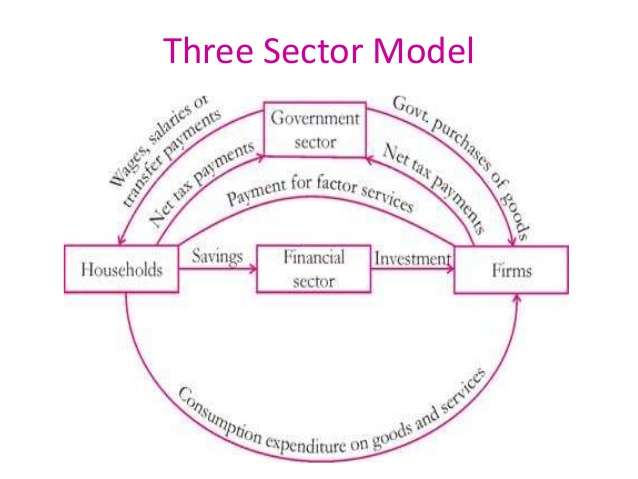
Circular Flow of Income and Expenditure in a Three-sector Model
The three-sector model is formed by adding the government sectors to the two-sector model. This sector includes the government, which plays an important role in the economy. It is necessary to include the effect of the fiscal operations of the government. It is also the case of a closed economy. The Government Collects tax from both the household and production sectors. The government provides subsidy and Government purchases to the production sector and wages, transfer payments to the household sector.
A three-sector circular flow is based on the following assumptions.
(i) There are three sectors in the economy, the household sector, the business sector, and the government sector.
(ii) The business sector is the sole producer of goods and services in the economy.
(iii) The household sector is the sole buyer of goods and services. It spends its entire income on the goods and services produced by the business sector. They are also suppliers of labor and various other factors of production.
(iv) The business sector sells the entire output to households. It does not store.
(v) There are no savings and investment in the economy.
(vi) The household sector receives income by selling or renting the factors of production owned by it.
(vii) The government does, not exist for all such practical purposes (No public expenditures, no taxes, no subsidies, no social insurance contribution, etc.).
(viii) The economy is closed one having no international trade relations.

fig: the circular flow in three-sector
You may also like: The Circular Flow in Two-Sector

Leave a Reply